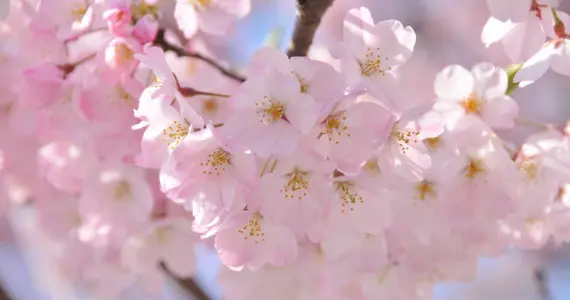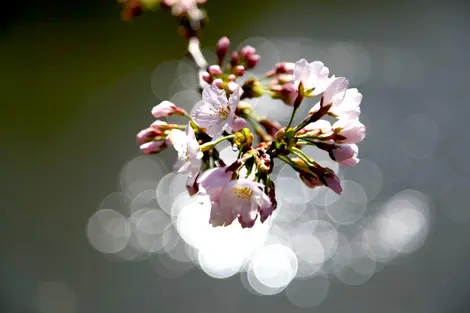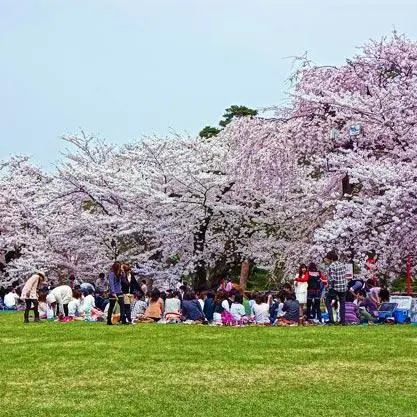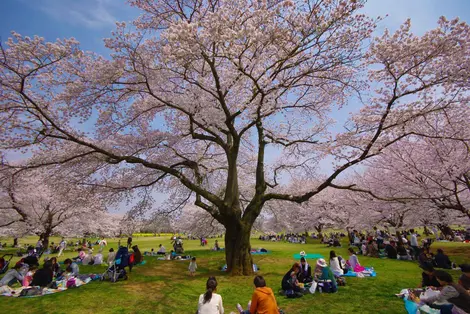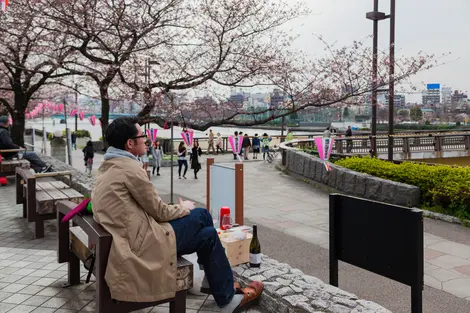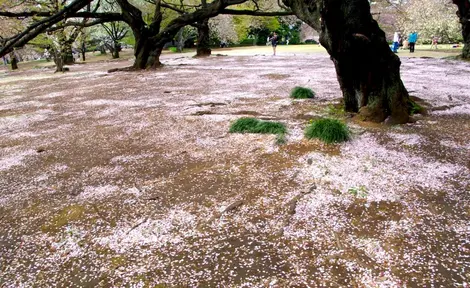The origins of Hanami 花見の歴史
- Published on : 28/02/2022
- by : I.D.O.
- Youtube
Cherry trees in Japan, a whole story...
Hanami is a custom that dates back to ancient times. Here's a look back at the history of an emblematic cultural phenomenon of Japan!
The custom of picnicking under cherry blossoms, called hanami in Japanese, is very old and linked to Shinto deities and agrarian rites.
The landmark of the gods
In ancient times, Japanese peasants believed that in the spring the gods of the fields settled in the cherry blossoms that bristled in the mountains. They, therefore, established a day of rest to be able to go under the cherry trees to honor and pray to the gods of the fields for the harvest to come. As required by Shinto rites, the peasants brought them food and drink and shared their meal with the kami (deities), seated under the cherry blossoms… The blossoming of the cherry trees was also an important date that announced the start of the work of the fields.
- Read also: Shintoism
A first imperial hanami
From the Heian era (794-1191), the nobles, who until then, as many poems of the time attest, seemed to prefer plum blossoms, began to admire cherry blossoms. The first hanami is said to have been held by Emperor Saga in 812, in Kyoto's Shinsen-en garden. The emperor and his court would then have written poems to extol the beauty of cherry blossoms. They had them planted all around their properties but also in the surrounding hills. The cherry tree, therefore, became a symbol of imperial power. Among the aristocrats, the hanami became a big party accompanied by music, songs, delicacies, and sake.
Grand celebrations
Later, it was the turn of samurai and shogun to propagate the custom. The latter had gardens planted with cherry trees and gave parties when they bloomed. Shogun Minamoto Yoritomo, the founder of Kamakura, instituted the "Court of Cherry Blossoms". As for the famous daimyo Toyotomi Hideyoshi, the feast he organized in March 1598 at the Daigo temple in Kyoto has remained in the annals. 700 cherry blossom trees had been transported from various parts of Japan to be replanted around the temple. In the Edo era (1603-1868), the daimyo held banquets in their gardens so that their distinguished guests could admire their cherry blossoms.
The democratization of hanami
Later, wealthy merchants did the same. This is the shogun Tokugawa Yoshimune who planted cherry trees in Tokyo on the banks of the Sumida river and around the temple Senso-ji in the early eighteenth century. The common people were then allowed to celebrate under the flowering trees. However, it wasn't until the end of the Edo period that ordinary Japanese people could also go under the cherry blossoms at night!
Hanami nowadays
Today, there is no Japanese city without its promenade or its cherry blossom park. The whole country awaits the bloom which is closely monitored by the Japan Meteorological Agency. The hanami is also and above all a pretext to celebrate. When the time comes, we meet up with family, friends, or colleagues to eat and drink.
Ephemeral beauty, evanescence: in Japan, there is no shortage of words to evoke the sakura. The cherry blossom symbolizes life on earth: beautiful, fragile but fleeting, hence the importance given to them by the Japanese for centuries.
- Read also: Cherry blossoms, when to go?


